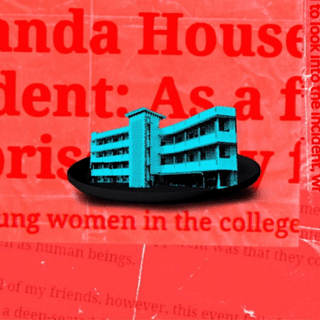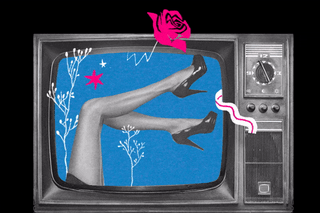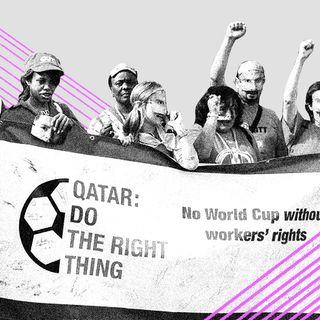
The Media Is Oversexed. Accurate Asexual Representation Can Fix That
When it comes to popular culture, it’s not just ace representation that’s needed. It’s a reckoning with sex itself.

There’s a theory making the rounds online about one of culture’s most famous sex symbols: Marilyn Monroe may have been asexual. It’s based on some telling lines in her unfinished autobiography called My Story. “Why I was a siren, I hadn’t the faintest idea. There were no thoughts of sex in my head. I didn’t want to be kissed, I didn’t dream of being seduced by a duke or a movie star. The truth was that with all my lipstick and mascara and precocious curves, I was as unsensual as a fossil,” Monroe writes.
“[I would wake up and] wonder if the whole world was crazy, whooping about sex all the time.”.
However, Monroe continues to be immortalized for a sensuality she herself claims she didn’t feel an affinity for, and sexualized in ways that never felt authentic to who she was. Her cultural iconography is one that’s dripping with sex. In the movie Blonde, for instance, Marilyn is shown having a threesome when there’s no evidence to suggest she did..
The conversation about asexual representation in pop culture doesn’t follow the same beats as conversations about queer representation. While the latter is in search of non-heteronormative depictions of sex, the former is in search of something else entirely: narratives that aren’t preoccupied with sex at all.
What does it mean, then, to tell stories that don’t revolve around sex as a driving factor, a motivator, or a plot closure?
“Our modern cinematic language is not fluent enough in talking about non-sexual connection,” says The Take. Look at, for instance, the genre of media dubbed “prestige TV.” HBO, as its progenitors, is known for its gratuitous use of sex and violence as a prerequisite for drama worth watching and critically analyzing. In the process of valorizing stories in which sex and all its many depictions plays a central part, popular media ends up projecting sex as essential to life itself.
When David Jay, founder of AVEN, appeared on The View, for instance, he said that asexuality isn’t talked about enough. “If you’re not having sex, what’s there to talk about?” jokes one of the hosts. “… sex has become so discursively central to our lives that it seems that those who do not have sex might really have nothing to talk about,” writes Karli June Cerankowski in Spectacular Asexuals: Media Visibility and Cultural Fetish.
Related on The Swaddle:
It’s Okay: To Not Make Sex an Important Part of Your Life
For a culture that talks about, thinks about, dreams and fantasizes about sex as much as it does, we scarcely spend any time engaging with what sex really means. One reason we’re so obsessed with sex, is that we’re also obsessed with love. Philosopher Alain de Botton notes that sex and love became intertwined in the 19th century – which is why infidelity became a tragedy. In this time, sex began to be seen as the “ultimate” expression of love itself, creating an axiomatic storytelling framework that would guide all subsequent narratives in the coming centuries. But while sexuality and love are intertwined, somewhere along the way we’ve confused sexuality with sex itself – and a heteronormative version of it at that.
This has led to problematic depictions of love and sex – someone who lacks sex appeal according to the mainstream is then also conflated with being unloveable. It’s evident in the “transformation” trope, where people – usually women – go from “ugly ducklings” to beautiful, desirable people who are worthy of love. It’s also the focal point of many cautionary tales in the oldest of stories: unattractive old witches often trick people by turning themselves into beautiful young women, sexually desirable and therefore more truthworthy. Their undoing – and indeed, their greatest fear – is being found out, losing their source of magic, and turning back into the “sexless old hag.”
A lack of asexual consciousness in popular culture, then, manifests in dangerous ways. It’s not so much about the absence of openly ace characters (a number which, in TV that’s currently airing, stands at zero according to GLAAD). It’s about who is assigned asexuality as a fault – a conception that’s defined by an external gaze. In other words, people who aren’t normatively desirable are automatically considered asexual.
“By linking asexuality to fatness, disability, and nerdiness, for instance, many media representations construct asexuality in opposition to normative notions of the body, gender, and sexuality,” writes Sarah E.S. Sinwell in Aliens and Asexuality: Media Representation, Queerness, and Asexual Visibility. “… whereas narratives of homosexuality, bisexuality, transgenderism, and transsexuality often revolve around the idea of “coming out,” … asexual characters do not often “name” themselves as such. Indeed, one of the reasons asexuality may be unseen (and unheard) onscreen is precisely because it is not recognized as a cultural category or sexual identity,” she notes.
In designating some people as undesirable, and therefore, asexual, popular culture not only alienates asexual people but also pathologizes age, fatness, disability, and ethnicity as faults.
It also robs certain people – non-white, non-normative characters – of the agency to define their own sexuality. “… they are not allowed to have a sexuality because, if they were, normative codes of sexual desirability would be threatened,” Sinwell continues.
Sinwell looks at how asexuality is often constructed as a pathology – using Dexter as an example of how an interest in sex is feigned by the eponymous serial killer in order to also feign normalcy.
Related on The Swaddle:
How Asexuality Is the Quiet Queer Revolution
Some TV depictions subvert this. “When I see what desire does to people… I am very glad to have no part in it,” says Varys, from Game of Thrones. Todd Chavez a Latino man from Bojack Horseman has been described as the most pivotal ace representation that TV has ever had – his journey through his sexuality places the spotlight on the sex-crazed culture he’s surrounded by, rather than on his own lack of interest in it.
But while the search for asexual representation tends to focus on characters who explicitly seem uninterested in sex in the context of a larger story where sex is still a defining plot, there’s still no script for knowing what stories entirely without sex look like.
“The sex myth, which is an extension of compulsory sexuality, has two parts. One is obvious: sex is everywhere and we are saturated in it, from song lyrics to television shows to close-ups of women’s lipsticked mouths eating burgers, meat juice trickling down their throats. The second part is the belief that… No sex means no pleasure, or no ability to enjoy pleasure,” writes Angela Chen, in Ace.
And here’s a more provocative suggestion: the admixture of feminism, pop culture, and sex positing sex as liberatory, as long as you have it, feels coercive.
Almost like the lyric in an infamous Robin Thicke song in which he’s constantly trying to push the boundaries of a person he desires: “just let me liberate you.”
Playboy culture, the sex wars, 19th century romanticism, and the cultural valorization of the nuclear family and marriage as its progenitor, all have shaped our ideas around the importance of sex in people’s lives. “Dominance of any one idea can be harmful. It can skew the lesson,” writes Chen, about the sexualization of popular culture. Sex, moreover, is seen as inextricable from desire and desirability. Campaigns like #ThisIsWhatAsexualLooksLike by model Yasmin Benoit then tend to turn the culture of linking sex with sensuality or even being sexy, on its head. It speaks to what it means to have ownership over one’s body – to want to be desired, without desiring.
It’s why the prospect of Marilyn Monroe being asexual shakes the very foundations of culture that’s built sex upon her image, and build her image upon sex. She’s eminently desirable – a symbol of sex itself – while seemingly eschewing it in real life.
When it comes to popular culture, then, it’s not just ace representation that’s needed. It’s a reckoning with sex itself.
Rohitha Naraharisetty is a Senior Associate Editor at The Swaddle. She writes about the intersection of gender, caste, social movements, and pop culture. She can be found on Instagram at @rohitha_97 or on Twitter at @romimacaronii.
Related


Rights Groups Boycott FIFA in Qatar. Why Are They Being Ignored?
